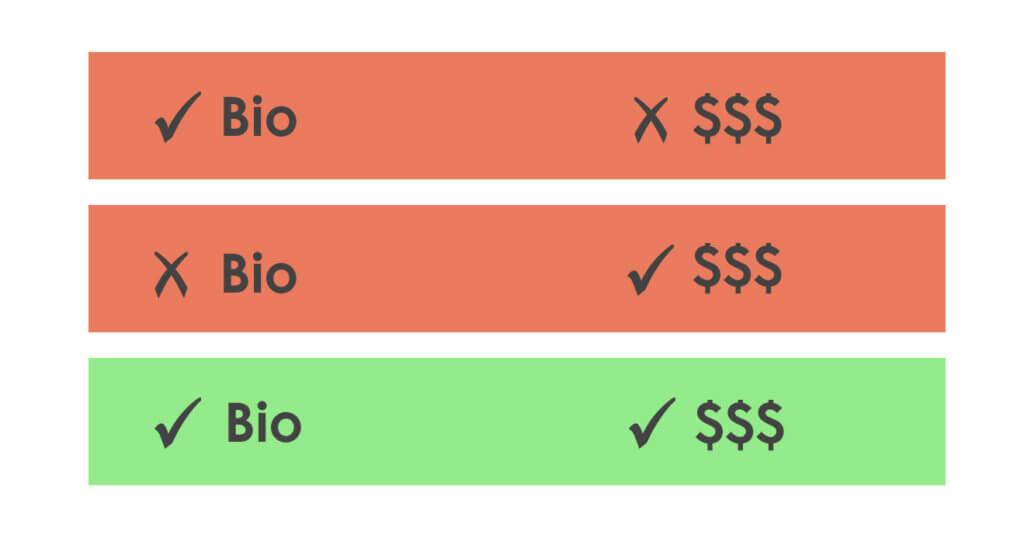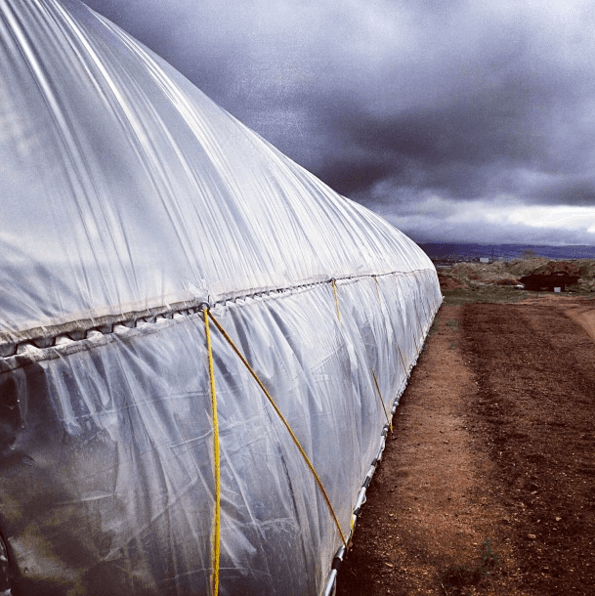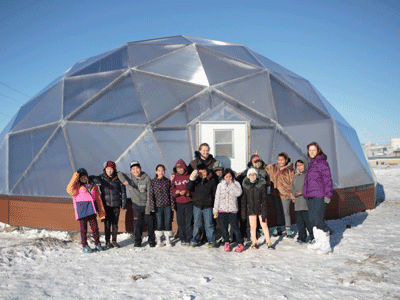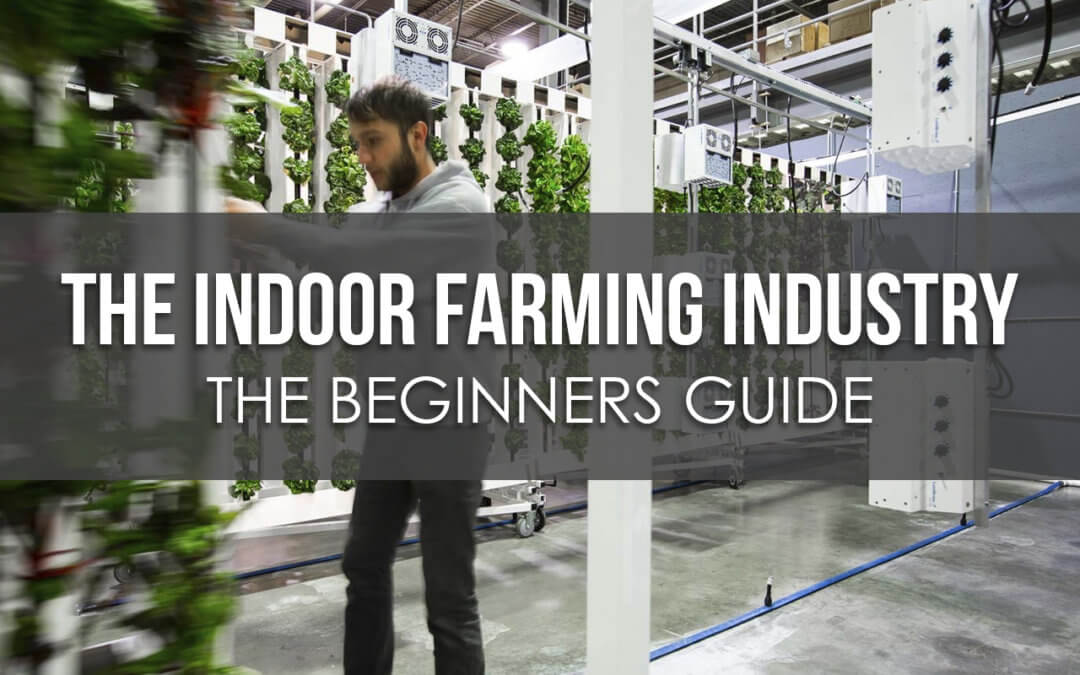Indoor farming is a popular subject in the media, and a booming industry with new farmers joining the game every day. In fact, there are growing conferences held solely for indoor farmers, their suppliers, influencers, and resources. But many are still left with questions about the indoor farm.
- Just what makes an indoor farm an indoor farm?
- What makes indoor farming so popular?
- What potential does indoor farming really have in the future?
- How will I interact with indoor farms?
Dr. Nate has an overview for you.
What is indoor farming all about?
What is indoor farming?
Indoor farms take many different forms, from flood trays to towers of greens, from warehouses to basements, and from microgreens to vining tomatoes. The pioneers of indoor farming used primarily horizontal techniques in growing spaces. However, as tech has developed, the industry has grown. As innovation increases, people have started thinking about the indoor space as a volume rather than an area. In other words, they’re thinking about a 3D farm instead of a 2D farm.

This “volumetric” mindset is the future of farming. This is a very exciting time for the indoor farming industry as farmers and designers are finding more and more ways to use that volume efficiently.
At first, this switch from area to volume was made by stacking horizontal planes. Eventually, human and plant needs led to forms of farming that use vertical planes instead of horizontal planes.

This is a very important switch. Indoor farming is more expensive in some ways, and vertical planes promise to help farmers achieve the goal of more affordable, efficient farms.
Vertical planes essentially double the useful volume of a given space, since the planes can grow plants on both sides, and allow for better airflow. (Of course, this is a simplified explanation. Learn how this works here.)
High production density isn’t the only thing that matters; farmers have to achieve high density in a way that is also economical.
In fact, the greatest mistake made by indoor farmers is the focus on biological viability (can we grow it?) without the requirement of economic viability (can we make money at growing it?). Without the second, the first is a moot point.

The key factors of economic viability are markets, costs, and production.
What does indoor growing have to offer?
The most obvious advantage of indoor growing is better environmental control. Considering that most crop loss is due to environmental factors like weather and pest access, control is a big deal!
Even in greenhouses, some factors are more controllable (like heat and cooling) but growers still depend heavily on natural factors like sunlight. They feel that they can’t afford to switch to completely indoor growing because sunlight is free. In reality, sunlight imposes limits on growing and production and exerts opportunity costs on the grower.

For example, a greenhouse grower in Colorado might feel that they can’t use indoor farming because they wouldn’t be able to use sunlight. Artificial lights cost money and electricity, but sunlight is free. Why would they give up a free resource? But they don’t realize that if they used artificial light, they could adjust the light cycles and wavelengths to give plants more of the light they need to grow. The space use that they could achieve with artificial lights would be an enormous improvement. By choosing to use sunlight rather than claim the benefits of growing indoors, they give up opportunities for better production.
In comparison, indoor growing gives growers tighter control over ventilation, CO2, light, etc. With a high level of control, bottlenecks to production are easy to counter.
Altogether, indoor farming can be more productive and profitable than greenhouse growing. This is not universally true, of course. Choosing a facility is situation specific. But indoor growing is a great option for many growers and often is a more realistic option than a greenhouse.
Indoor growing also represents benefits to consumers by increasing food accessibility. When space needs are slashed and outdoor environment (or climate) is no longer enforcing limits, farms can be located anywhere. (And I mean anywhere.)
This means that:
- More people are able to start farms.
- We can move production closer to the consumer, which delivers better value.
- Farmers can produce consistent value and volume throughout the entire year.
These benefits are changing the future and how we think about produce, where our produce comes from, the prices we pay, and how that money moves through the economy.
Who is indoor farming right now?
 Currently, most indoor farmers are small farmers who are passionate about meeting demand in their communities and local markets. Most of them are producing specialty crops or selling to niche markets on the fringes of demand; from rural Alaska to downtown Manhattan.
Currently, most indoor farmers are small farmers who are passionate about meeting demand in their communities and local markets. Most of them are producing specialty crops or selling to niche markets on the fringes of demand; from rural Alaska to downtown Manhattan.
There are a few large-scale commercial vertical farms in the US, many of them focused on community building, job creation, or niche markets, and about half of those are using ZipGrow technology!
Each area in which indoor farming is taking place is marked by a unique set of resources and needs.
For example, Japan has unique resources in the form of government subsidies and underutilized semiconductor and microchip facilities. US indoor farmers, on the other hand, are powered mostly by markets with high demands and value for local produce. China is motivated by food safety concerns and the demand for safe produce. The needs and resources vary, but they all come back to the same thing: indoor farms.
In addition to all this, indoor farming is a “wild west” industry—a small space that’s expanding quickly, with tons of opportunities, especially for people wanting to get in on the ground level.
More and more people are getting involved, which isn’t that surprising. After all, people want to be tied into a community and to connect with their food in a meaningful way. Both of these intrinsic desires can be solved with indoor farming.
How can you get involved with indoor growing?
As a consumer, you have a big impact on the success of indoor farmers. You can support them and their values by buying local food. You can ask questions and think critically, engaging on blogs and videos. You can encourage farmers by understanding what they stand for.
Want to have a bigger impact on your community? Consider starting a farm! (You can explore that option by training at Upstart University.)
If you have more questions about how to get connected with others in the indoor farming industry check out our Ultimate Guide to Starting a Farm!
Leave a comment! Do you think indoor farming is the future?



Would like to start small. One or two units in a unused bedroom. To grow lettuce, kale, and such. Been looking for a compact way for lighting and these seem to fit the idea. Maybe a kitchen wall too. Green Onions herbs etc. So sick of feeding the fields of rotten lettuce and other greens. This non-dirt growing is a whole new world for me which is another reason as to why I want something small.
I have been studying Aquaponics for bout 8 yrs. My interest came from being in the produce trucking business. After seeing the trash they r trying to feed the US I knew there had ton a better way. After 30 yrs it’s time for a different profession I actually talked to u guys bout a Year after y’all got rollin. Sounds like u have it figured out. I am very interested in all u do. Look forward to talking with u n getting the Farm hoppin
Hello to every one, because I am really keen of reading this website’s post to
be updated on a regular basis. It includes good information.
Yes, this is the future of farming. Especially you are empowered by IoT, Big data and machine learning with Plenty
One of the best and my favorite blog ever.